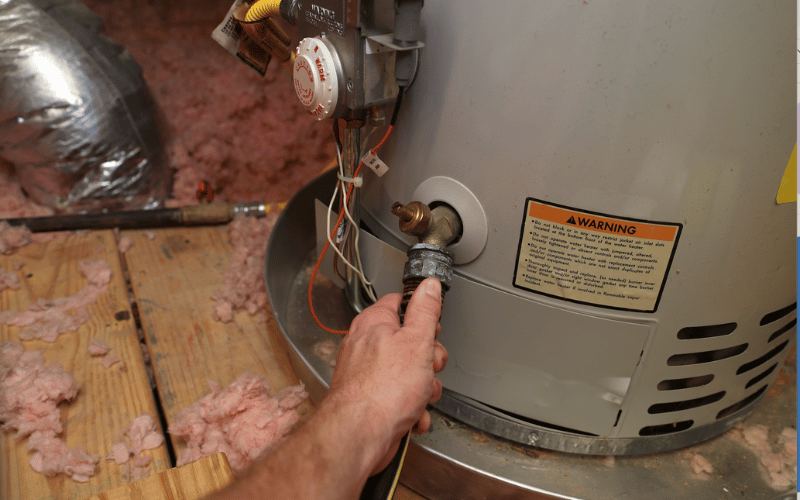Important Guidance on Maintaining Your Home's Hot Water SystemSpecialist Advice for Maintaining Your Home's Hot Water System
Important Guidance on Maintaining Your Home's Hot Water SystemSpecialist Advice for Maintaining Your Home's Hot Water System
Blog Article
What are your opinions on Tips For Maintaining Your Hot Water Heater?

Warm water is crucial for everyday convenience, whether it's for a rejuvenating shower or washing meals. To ensure your warm water system runs successfully and lasts much longer, regular upkeep is essential. This post offers sensible ideas and understandings on exactly how to maintain your home's hot water system to stay clear of interruptions and costly fixings.
Intro
Maintaining your home's warm water system may seem daunting, however with a few straightforward steps, you can ensure it runs smoothly for years ahead. This guide covers everything from comprehending your warm water system to DIY maintenance pointers and understanding when to call in specialist assistance.
Importance of Keeping Your Hot Water System
Normal maintenance not only expands the lifespan of your warm water system however also guarantees it operates effectively. Overlooking upkeep can lead to reduced efficiency, greater energy costs, and even early failure of the system.
Indicators Your Hot Water System Demands Maintenance
Recognizing when your hot water system requires attention can stop major issues. Watch out for signs such as inconsistent water temperature level, unusual sounds from the heater, or corroded water.
Understanding Your Warm Water System
Prior to diving into upkeep tasks, it's practical to understand the standard components of your hot water system. Normally, this consists of the water heater itself, pipelines, anode poles, and temperature controls.
Regular Monthly Maintenance Tasks
Routine month-to-month checks can aid catch minor concerns before they intensify.
Purging the Water Heater
Flushing your hot water heater eliminates debris buildup, enhancing performance and prolonging its life.
Checking and Changing Anode Rods
Anode poles prevent rust inside the storage tank. Checking and replacing them when worn is vital.
Evaluating and Readjusting Temperature Level Setups
Adjusting the temperature level settings makes sure optimum efficiency and safety.
DIY Tips for Maintenance
You can do numerous maintenance tasks on your own to maintain your warm water system in leading problem.
Looking for Leakages
Consistently evaluate pipelines and connections for leaks, as these can bring about water damage and higher expenses.
Evaluating Pressure Alleviation Valves
Examining the stress relief valve ensures it functions appropriately and protects against too much stress accumulation.
Protecting Pipes
Shielding warm water pipes decreases heat loss and can save power.
When to Call a Specialist
While do it yourself maintenance is useful, some problems require professional expertise.
Facility Problems Requiring Professional Aid
Instances include significant leaks, electrical problems, or if your hot water heater is constantly underperforming.
Routine Professional Upkeep Perks
Expert upkeep can include detailed examinations, tune-ups, and making sure compliance with safety and security criteria.
Final thought
Regular upkeep of your home's hot water system is crucial for efficiency, long life, and expense savings. By adhering to these ideas and knowing when to look for professional aid, you can make sure a dependable supply of warm water without unforeseen disturbances.
How to Maintain an Instant Hot Water Heater
Before tinkering with your hot water heater, make sure that it’s not powered on. You also have to turn off the main circuit breaker and shut off the main gas line to prevent accidents. Also turn off the water valves connected to your unit to prevent water from flowing into and out of the appliance. 2. When you’re done, you have to detach the purge valves’ caps. These look like the letter “T” and are situated on either side of the water valves. Doing so will release any pressure that has accumulated inside the valves while at the same time avoid hot water from shooting out and burning your skin. 3. When the purge valves’ caps are removed, you have to connect your hosing lines to the valves. Your unit should have come with three hoses but if it didn’t, you can purchase these things from any hardware or home repair shops. You can also get them from retail stores that sell water heating systems. Read the user’s manual and follow it to complete this task properly. When the hosing lines are connected, open the purge port’s valves. 4. You should never use harsh chemical cleaners or solutions when cleaning your unit. Make use of white vinegar instead. It should be undiluted and you’ll probably use about 2 gallons. 5. Now flush your water heater. This task should probably take about 40 minutes. We can’t give you specific directions for this because the procedure is carried out depending on the type, model and brand of your heater. With that being said, refer to the user’s manual. 6. When you’re done draining the unit, you have to turn off the purge port valves again. Remove the hosing lines that you earlier installed on each of the water valves. Put the valve caps (purge port) back in their respective places and be very careful so as not to damage the rubber discs that are found inside these caps. 7. Now that everything’s back in place, check your user’s manual again to find out how to reactivate your water heating system. 8. Once it is working, turn one of your hot water faucets on just to let air pass through the heater’s water supply pipes. Leave the tap on until water flows smoothly out of it. https://www.orrplumbing.com/blog/2014/september/how-to-maintain-an-instant-hot-water-heater/

As a fervent person who reads about Tips For Maintaining Your Hot Water Heater, I figured sharing that piece of content was essential. Please take the opportunity to promote this blog if you enjoyed it. We value your readership.
Call Today Report this page